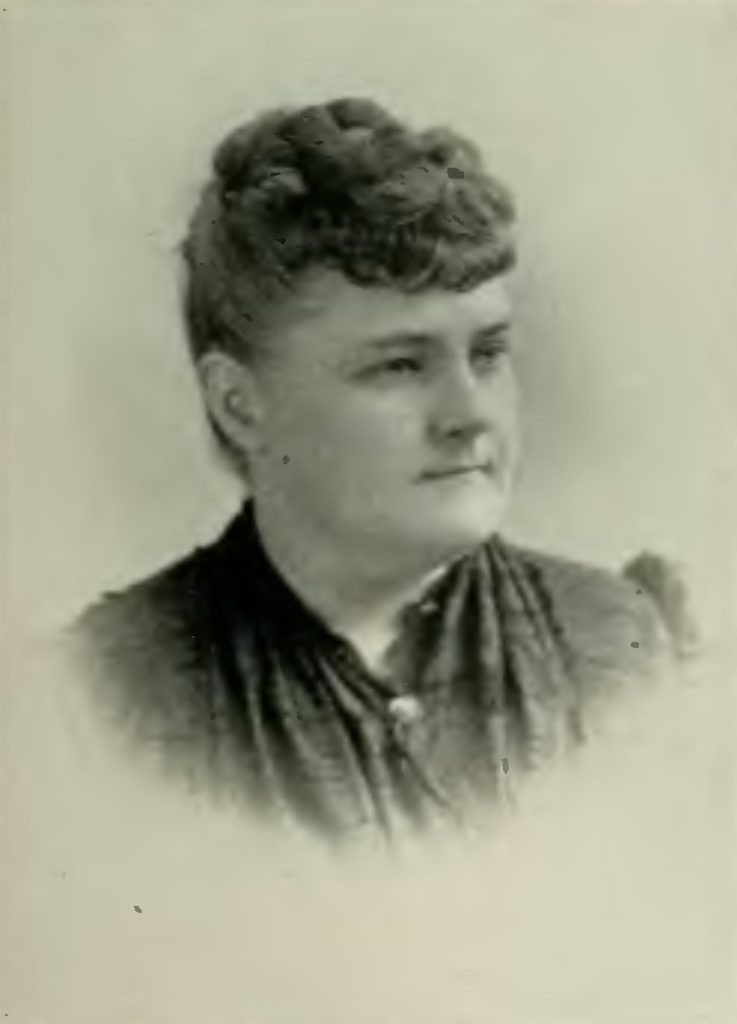
Harriet B. Jones was born in Ebensburg, Pennsylvania in 1856. However, her family later moved to Terra Alta, West Virginia, where she was raised. At the age of 12, her father enrolled her in the Wheeling Female College. The school’s aim was to provide women with a liberal arts education, not to mimic the presumably more rigorous educations offered to men at the time, but tailored to the “wants of young ladies.” Harriet’s first experience with education, therefore, was constrained by contemporary, sexist rules regarding gender and occupations. Despite this, however, she continued her education after leaving the College. She enrolled in the Woman’s Medical College of Baltimore, and graduated, with honors, in 1884. [1] She pursued further training in gynecology and abdominal surgery. Dr. Jones returned to West Virginia and opened her own women’s hospital in Wheeling in 1886, becoming the first female physician in the state of West Virginia.
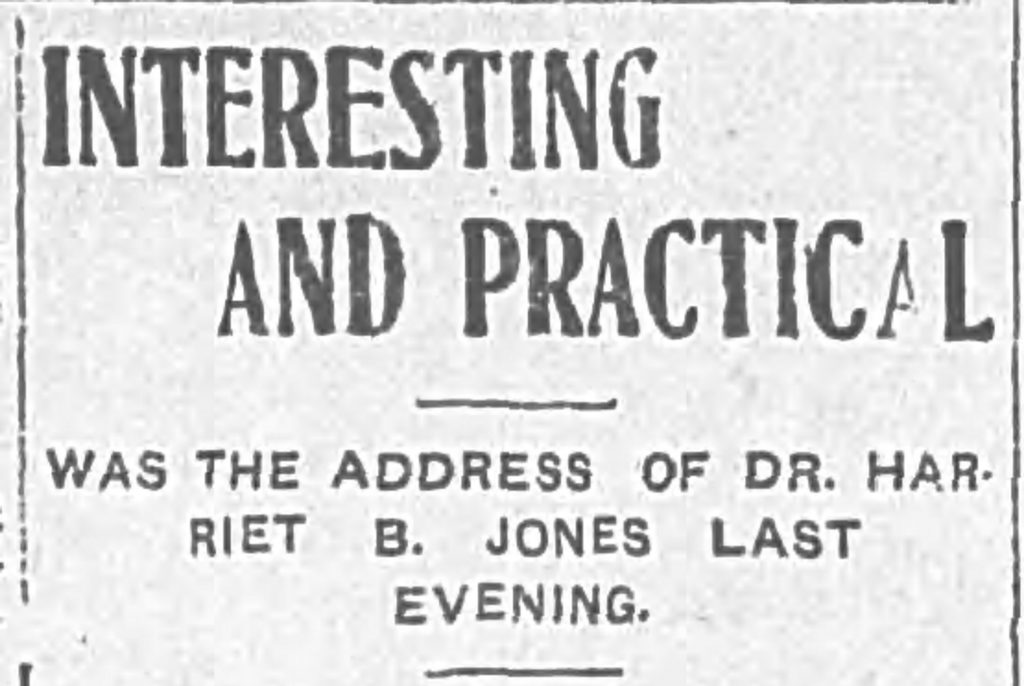
Dr. Jones quickly recognized the significant health issues facing her state. She was especially concerned with tuberculosis and the welfare of orphaned and homeless girls. She also took great interest in public health. She traveled throughout West Virginia presenting talks to West Virginia communities, covering topics ranging from tuberculosis prevention, to preschool health screenings, to “the important phases of the life of school girls.”
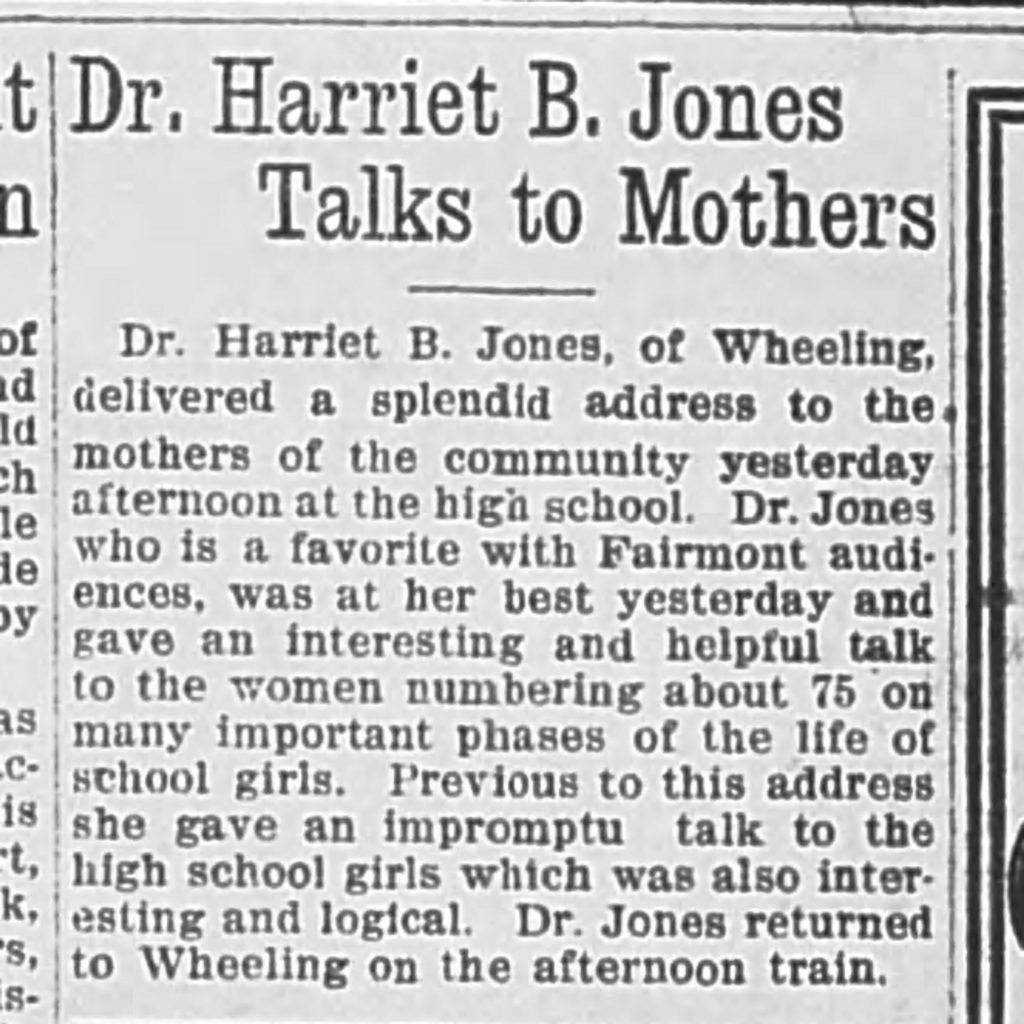
Dr. Jones was also a tireless advocate for her patients, traveling to Charleston numerous times to lobby for the establishment of institutions to alleviate the social and medical problems of West Virginia. Often, she was successful. Her efforts led to the founding of the West Virginia Industrial Home for Girls in Salem, the West Virginia Children’s Home in Elkins, the West Virginia Tuberculosis Sanitarium (in her home town of Terra Alta), and the State Tuberculosis Sanitarium for the Colored. She was also named assistant superintendent of the West Virginia Hospital for the Insane (later known as Weston State Hospital and currently known as the Transallagheny Lunatic Asylum.)
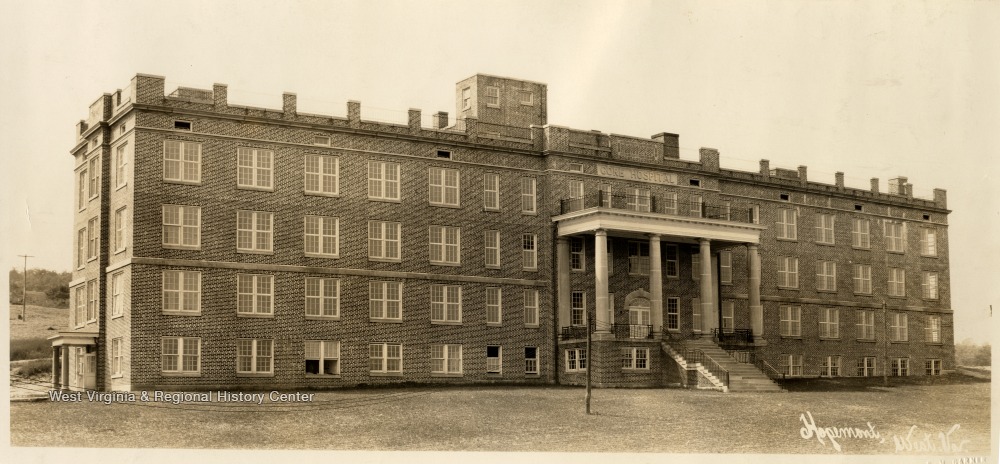
While Dr. Jones’s health outreach efforts were popular, her politics were not always well-received. She was a tireless advocate for women’s suffrage and women’s rights. She secured the right of women to be admitted to West Virginia University and educated women extensively on the government of West Virginia. She wrote several pamphlets geared towards women on the subjects of state government and parliamentary laws, and would later write a history of women’s suffrage in West Virginia. Shortly after women finally won the right to vote, Dr. Jones became officially active in politics. She became the first woman to be elected to the West Virginia House of Delegates, serving Marshall County for two terms starting in 1924.
Dr. Jones worked until the age of 72, then enjoyed a retirement in Wheeling before passing away at the age of 87. During her lifetime, women were rarely able to break into the medical field as physicians. At her death in 1943, only 4-5% of all physicians in the United States were women, a proportion that would remain constant until the 1960s and a new wave of women’s rights activism. Today, few physicians know her story, and it is not taught in West Virginia medical schools. Dr. Jones was a remarkable woman, pursuing a career not considered suitable for women, and then using that same tenacity to improve the lives of countless West Virginians throughout her career.
Sources
“Dr. Harriet B. Jones.” Changing the Face of Medicine: Celebrating America’s Women Physicians. https://cfmedicine.nlm.nih.gov/physicians/biography_346.html
William C. Blizzard. “Dr. Jones Wore a Dress”. Sunday Gazette-Mail, Charleston, WV. April 2nd, 1909.
“History of Women Physicians: Timeline.” http://archives.drexelmed.edu/timeline.php
Christine Keiser. “Harriet B. Jones.“ e-WV: The West Virginia Encyclopedia
[1] There is little available information on the Woman’s Medical College of Baltimore, which closed in 1909 due to lack of funding. Johns Hopkins University School of Medicine would not even allow women to sit in on lectures for another 10 years.
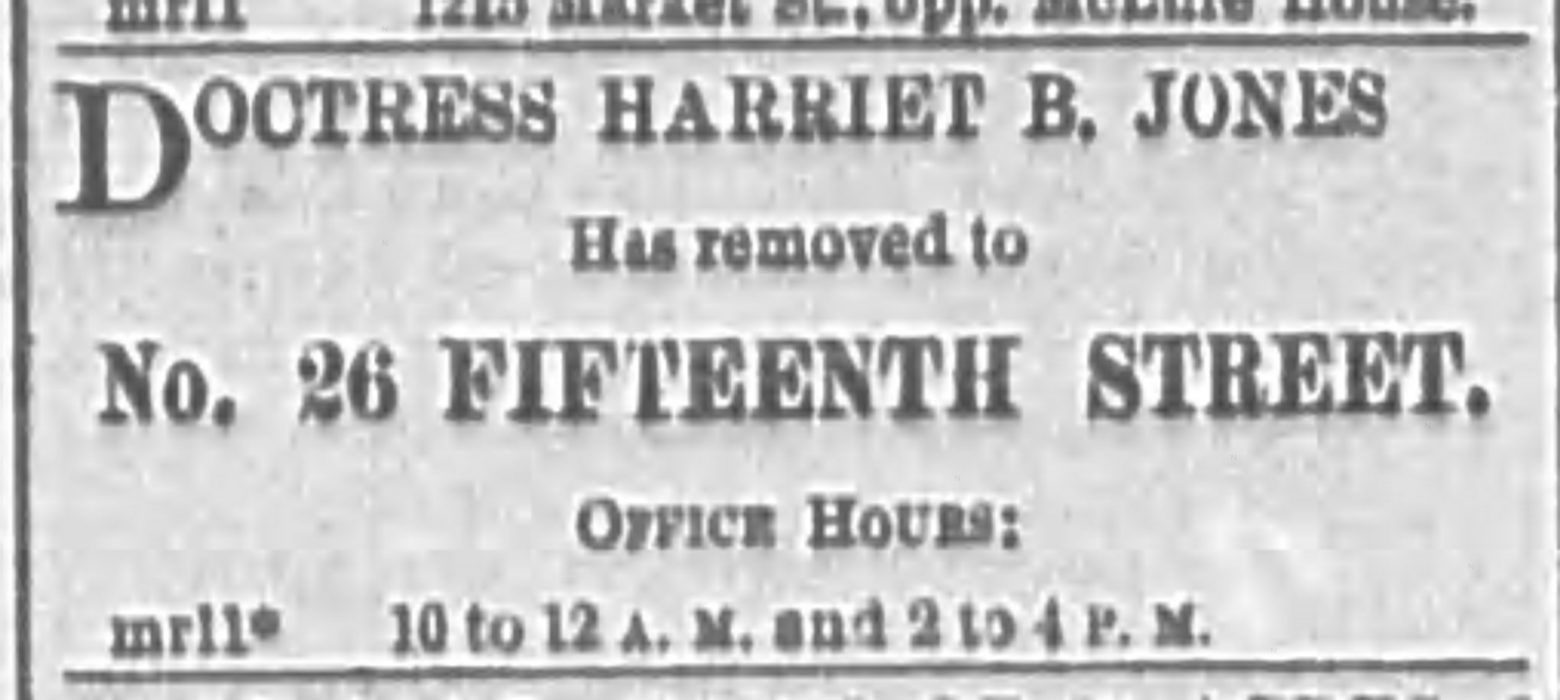
As usual Mollie…great read!! Keep up the good work..:)